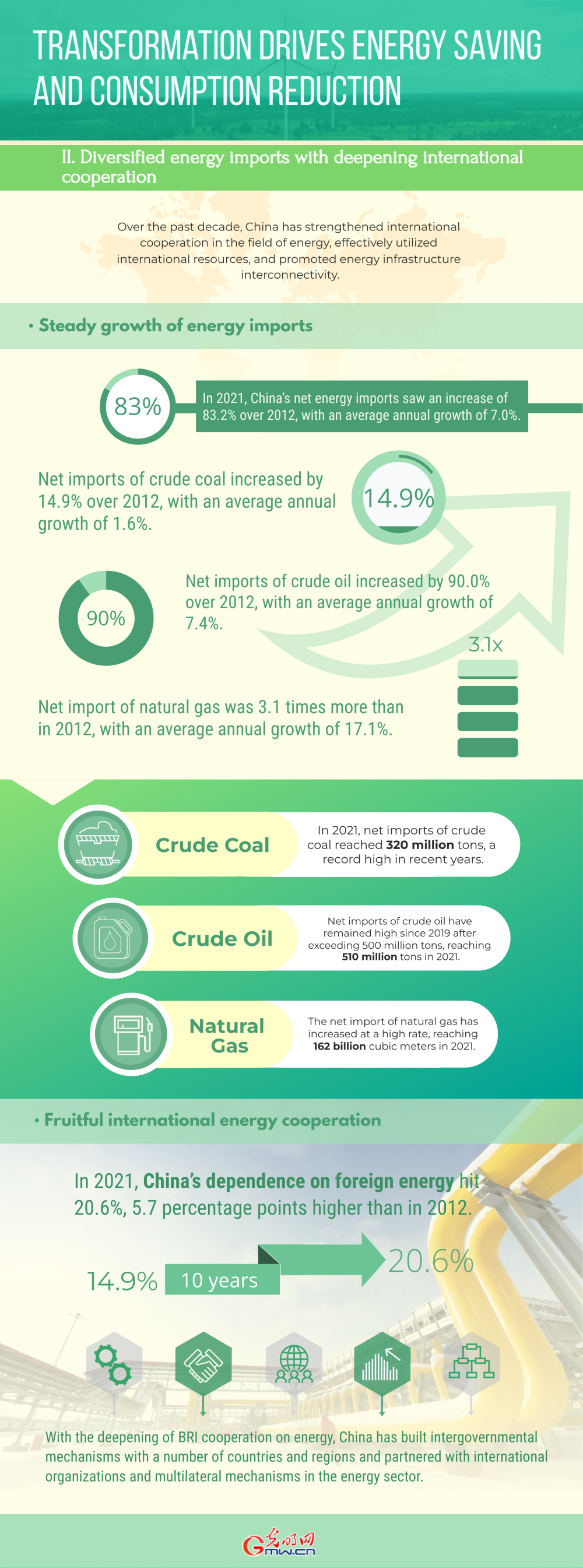

II. Diversified energy imports with deepening international cooperation
Since the 18th Party Congress, China has strengthened international cooperation in the field of energy, effectively utilized international resources, and promoted energy infrastructure interconnectivity. The construction of five major oil and gas cooperation zones in Central Asia-Russia, the Middle East, Africa, the Americas, and the Asia-Pacific has made steady progress, and four strategic oil and gas import channels in the northwest, northeast, southwest and from offshore have basically taken shape.

1. Steady growth of energy imports
In 2021, the country’s net energy imports totaled 1.12 billion tons of standard coal, an increase of 83.2% over 2012, with an average annual growth of 7.0%. Net imports of crude coal have steadily increased for six consecutive years since 2016. In 2021, net imports of crude coal reached 320 million tons, a record high in recent years, up 14.9% from 2012, with an average annual growth of 1.6%. Net imports of crude oil have remained high since 2019 after exceeding 500 million tons, reaching 510 million tons in 2021, up 90.0% from 2012, with an average annual growth of 7.4%. The net import of natural gas has increased at a high rate, reaching 162 billion cubic meters in 2021, 3.1 times more than in 2012, with an average annual growth of 17.1%.
2. Fruitful international energy cooperation
In 2021, China’s dependence on foreign energy hit 20.6%, 5.7 percentage points higher than in 2012. With the deepening of BRI cooperation on energy, China has made new breakthroughs by building intergovernmental mechanisms with a number of countries and regions and partnering with international organizations and multilateral mechanisms in the energy sector.
点击右上角![]() 微信好友
微信好友
 朋友圈
朋友圈

请使用浏览器分享功能进行分享
